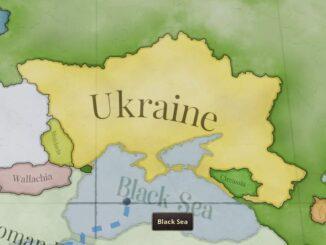
Institutions are the “services” the government provides to its pops. These include things like schools and workplace safety controls, as well as conscription offices, militarized police, and poorhouses.
Guide to Institutions
Intro
While laws are political hot buttons with your interest groups, institutions are a side effect of those laws, and it’s not as politically fraught to expand your pre-existing health care system as it is to establish or dismantle it. That being said, the laws that bring an institution into existence also govern what effects they may apply, and interest groups will care a lot about those.
An important aspect of institutions is that the effects and benefits they apply only affect incorporated parts of the country. As unincorporated states — such as colonial frontiers, contested territories, or recently annexed land — do not pay taxes, they also do not cost bureaucracy and lack access to the country’s institutions.
Establishing Institutions
To establish institutions the player first needs to enact a law which enables them and then they would need to ensure they have sufficient bureaucracy for their operation. There are always several different laws that enable a certain institution, and which is chosen will “flavor” the institution accordingly.
For example, the colonial affairs institution has a base effect which generates colonial growth in all established colonies in relation to the size of the incorporated population, by encouraging people to move and invest there. If the institution is enabled via the Law colonial resettlement law then each institution level will also provide increased colonial migration pull to entice the population to move there. If instead, the institution is enabled via the Law colonial exploitation law then it would instead increase the throughput of the colonial industries (per each level) while reducing the standard of living of pops who live there.

Institution summary tab showing the institutions’ level, the per-level-cost, and the total cost.
Institutions types
There are 7 institutions types:
- Colonial affairs – The office handling the management of foreign colonial holdings.
- Education system – The nation’s school system, ensuring a growth in population literacy.
- Health system – Keeping the spread of disease at bay.
- Home affairs – Tasked with obstructing citizen revolts.
- Law enforcement – The national police force enforcing the nation’s laws.
- Social security – Welfare A safety net for the old or infirm.
- Workplace safety office – The ministry controlling that labor laws are followed.
Bureaucracy Cost
Institutions run on Hud bureaucracy which comes from government administration buildings, which employ clerks and bureaucrats that consume paper (and later on other goods, like telephones) in the process. The more government administration buildings the nation has, the more and larger institutions that it can operate at once.
The cost of institutions, or the cost of one level of an institution, is dependent on the size of the population across the nation’s incorporated states. This means the total cost of maintaining the country’s institution setup can suddenly increase due to a rise in the country’s population. If it will lead to a deficit of bureaucracy, then a pretty hefty “tax waste” modifier penalty will be applied, which causes a percentage of all taxes collected to never make it to the treasury.
The bureaucracy invested into institutions can be redistributed as needed, but this takes time. The player may opt to reduce the level of one of the institutions, which will restore the bureaucracy balance, while the government administration is being expanded to be able to regain the lost level. Since institutions expand gradually, restoring that lost level will take some time, so if possible it’s best to stay ahead of the change and expand government administration proactively — especially if there happens to be strong population growth or immigration waves to the incorporated states.
Running a positive bureaucracy balance is great for remaining responsive to the people’s evolving needs. In the meantime, any excess bureaucracy will be used to marginally improve construction efforts around the country.
Decreasing bureaucracy costs
Ways of decreasing the cost of providing institutions to the pops include:
- Passing laws to decentralize the bureaucracy with elected rather than appointed officials.
- Society inventions like Behaviorism that provide insight into people management.
- Refraining from incorporating colonies and conquered territories.
- Reducing the size of the population (via war or disease).





Be the first to comment